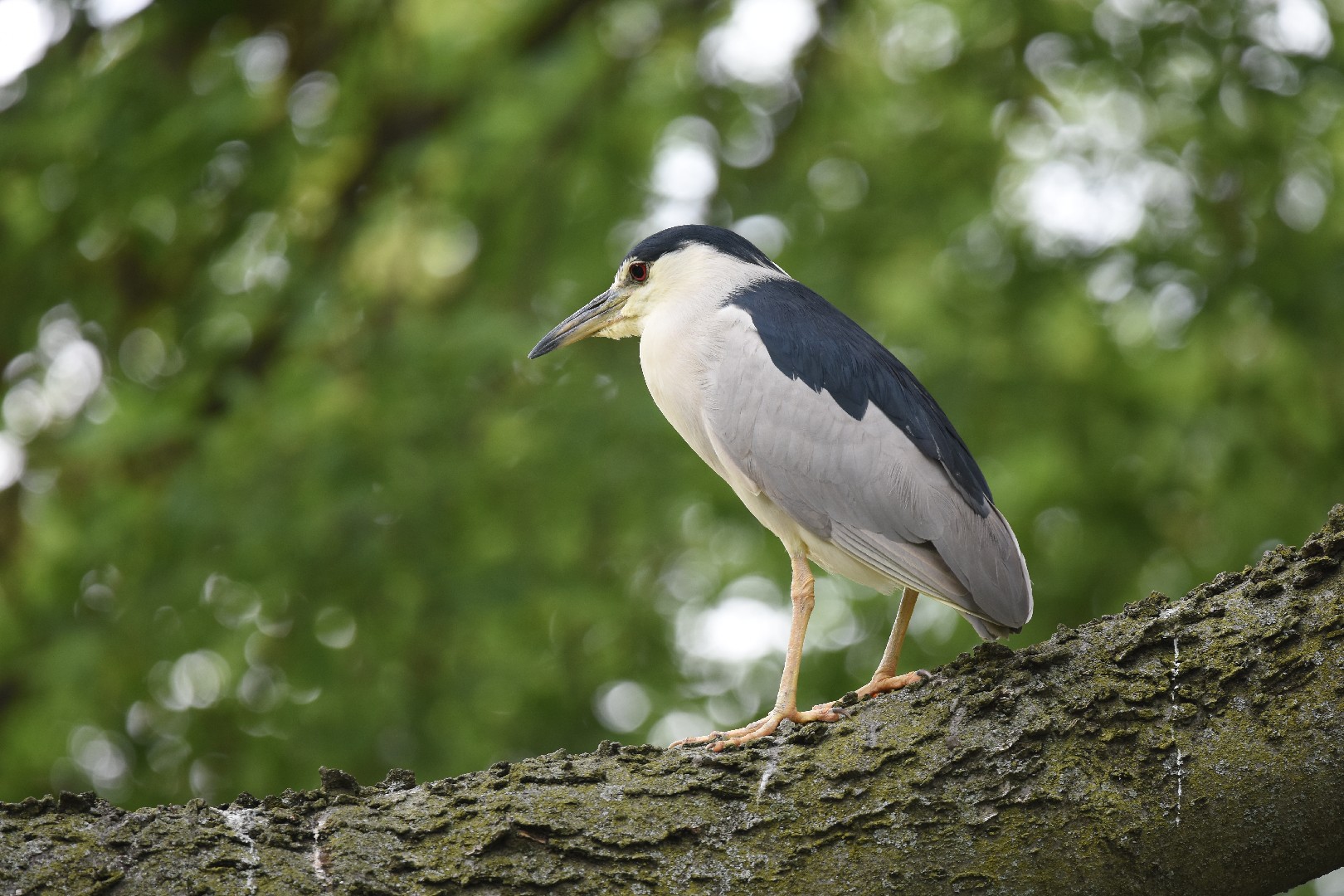Black-crowned Night-heron
A species of Nycticorax Night-herons, Also known as Night Heron Scientific name : Nycticorax nycticorax Genus : Nycticorax Night-herons
Black-crowned Night-heron, A species of Nycticorax Night-herons
Also known as:
Night Heron
Botanical name: Nycticorax nycticorax
Genus: Nycticorax Night-herons
Content
Description People often ask General Info
 Photo By Andy Reago & Chrissy McClarren , used under CC-BY-2.0 /Cropped and compressed from original
Photo By Andy Reago & Chrissy McClarren , used under CC-BY-2.0 /Cropped and compressed from original Description
The shorter, stockier version of their long-legged heron counterparts, the black-crowned Night-heron is most active in the early evening hours, giving them their name. The most commonly-found heron across the world, you can spot them in wetlands, though they may be more difficult to notice than the taller heron species. Studying their nests can get a bit smelly- startled nestlings tend to eject their food when they are approached by people.
Size
58 - 66 cm
Life Expectancy
21.1 years
Nest Placement
Tree
Clutch Size
3 - 5 eggs
Number of Broods
24 - 26 days
Nestling Period
29 - 34 days
Feeding Habits
Black-crowned Night-heron are nocturnal opportunistic feeders, consuming a wide variety of prey including fish, insects, rodents, amphibians, reptiles, and bird eggs. They hunt by grasping rather than stabbing. During breeding, they may forage by day to meet increased energy demands.
Habitat
Black-crowned Night-heron typically inhabits diverse wetland environments such as swamps, rivers, marshes, mudflats, and lake edges rich in rushes and cattails. They thrive across North America in freshwater and saltmarshes, and their global distribution includes various aquatic habitats suitable for foraging and dense terrestrial vegetation for nesting. Commonly found at low altitudes, black-crowned Night-heron prefers temperate to subtropical climates. During winter, these birds frequent southern coastal areas, utilizing habitats like mangroves, marshes, and even flooded agricultural fields.
Nest Behavior
The male black-crowned Night-heron initiates nest construction and advertising for a mate. The pair then jointly builds the nest, with the male gathering and the female arranging materials. Nesting is communal with colonies sometimes enduring over 50 years.
Nest Characteristics
Black-crowned Night-heron typically nests in trees or cattails in predator-safe areas like islands, swamps, or over water. They nest colonially with up to a dozen nests per tree. Nests are platforms made of sticks, twigs, and vegetation, measuring 12–18 inches across and 8–12 inches high, varying from sturdy to flimsy.
Dite type
Piscivorous
People often ask
General Info
Feeding Habits
Bird food type
Sounds
Call
Recording location: Brazil
Call
Recording location: Brazil
Call
Recording location: South Africa
Behavior
Black-crowned Night-heron exhibit social and territorial instincts throughout the year, with both sexes displaying defensive postures against territory intrusions, often engaging in bill-to-bill or wing combat. Mating pairs are ostensibly monogamous, with males performing courtship gestures that include head plumes elevation and bowing to attract females. Both male and female contribute to nesting duties, sharing incubation and offspring rearing, often exchanging roles through vocal communication and feather displays. Fledglings leave the nest at one month old and initially remain grounded, joining nocturnal gatherings before they achieve flight at six weeks, subsequently dispersing broadly.
Distribution Area
The breeding habitat is fresh and salt-water wetlands throughout much of the world. The subspecies N. n. hoactli breeds in North and South America from Canada as far south as northern Argentina and Chile, N. n. obscurus in southernmost South America, N. n. falklandicus in the Falkland Islands, and the nominate race N. n. nycticorax in Europe, Asia and Africa. 

 Photo By Andy Reago & Chrissy McClarren , used under CC-BY-2.0 /Cropped and compressed from original
Photo By Andy Reago & Chrissy McClarren , used under CC-BY-2.0 /Cropped and compressed from original Scientific Classification
Phylum
Chordates Class
Birds Order
Pelicans and Relatives Family
Herons Genus
Nycticorax Night-herons Species
Black-crowned Night-heron